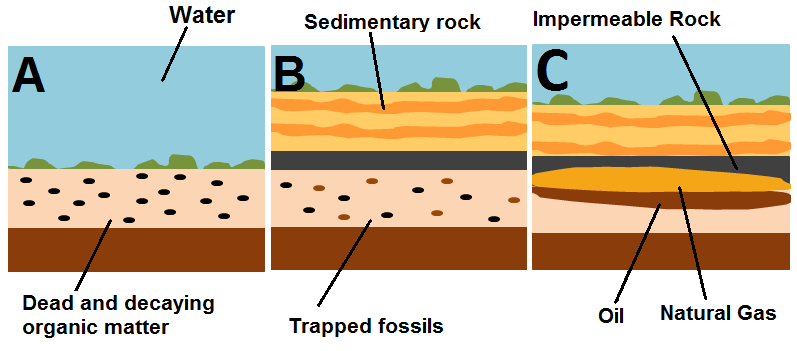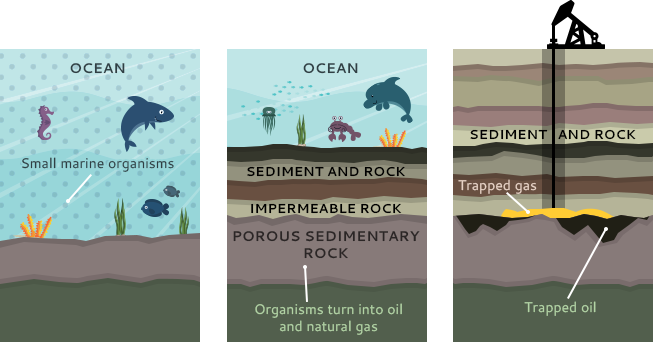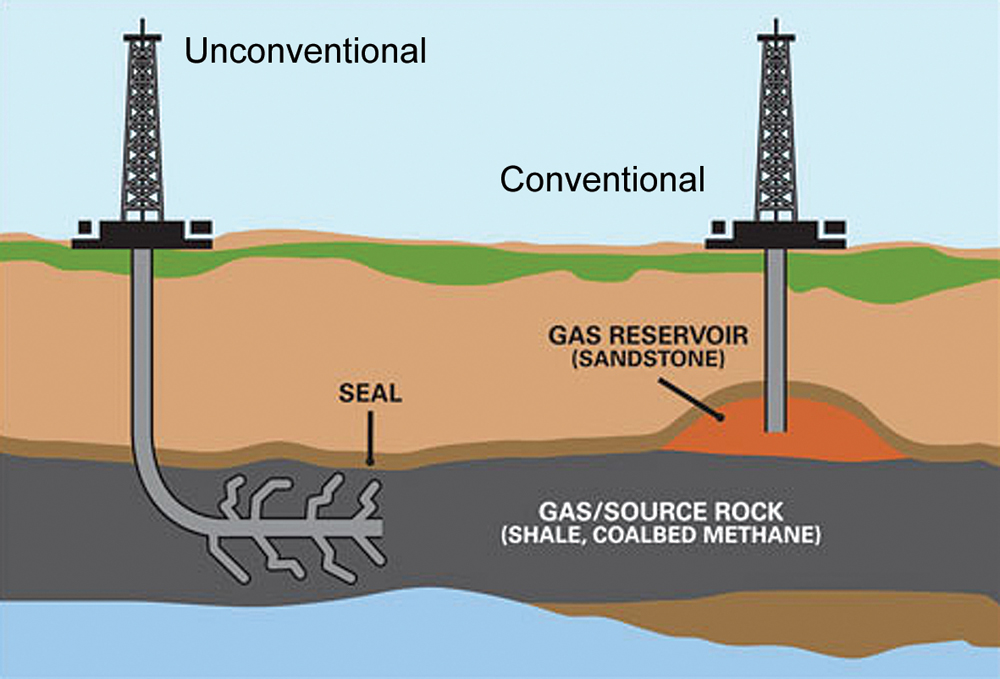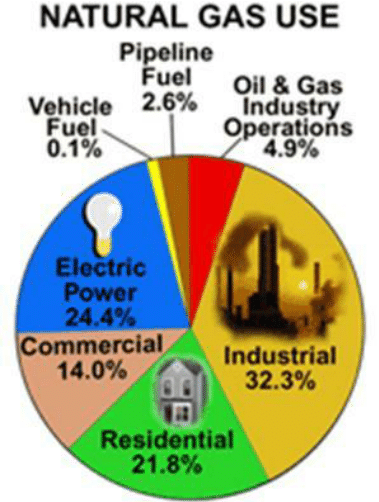Introduction
Natural gas is a type of fossil energy occurring in a hydrocarbon gas mixture. It was first discovered in Iraq between the years 6000 and 2000 BC (Ma, 2017). This fossil gas was formed due to the ancient remains of animals and plants, such as diatoms that were buried hundreds to millions of years ago. Over time, as these remains accumulated, they formed thick layers beneath the earth’s surface and ocean floors. The layers were mixed with silt and calcium carbonate. Due to pressure and heat, most buried materials rich in carbon and carbon were transformed into coal, oil, and natural gas.

Composition of Natural Gas
Natural gas is a mixture primarily comprised of methane, a compound consisting of one carbon and four hydrogen atoms. The mixture also contains varying amounts of alkenes and nonhydrocarbon gases such as water vapor and carbon dioxide (Ma, 2017). It is at times referred to as the gaseous form of crude oil. The gas may occasionally contain certain light liquids such as propane and butane, and due to this specific property, it is also termed as the wet gas.
Natural Gas location and Formation
Natural gas is located approximately 500 feet below the earth’s surface. Underneath, the gas is found in deep underground rock formations and associated with different hydrocarbon reservoirs in coal beds and as methane clathrates. The gas is formed through two mechanisms: biogenic and thermogenic. Methanogenic organisms formed the biogenic type of gas in landfills, shallow sediments, bogs, and marshes (Ma, 2017). Thermogenic gas is formed from buried organic materials by the high temperature and pressure.

Natural Gas Extraction
Fossil energy is extracted from the earth’s surface by the vertical drilling process. Each well is regulated to the encountered reserves from one drill. To improve productivity and increase the amount of gas a well can access, hydraulic fracturing, acidizing, and horizontal drilling processes are used. The fracking process separates open rock formation using high-pressure streams of water, sand, and chemicals. Once the props open the rock, the gas is allowed to escape for storage or transportation (Ma, 2017). Horizontal drilling increases the area of the well by redirecting the driller sideways. The acidizing process involves dissolving acidic components and draining them into the wells. The solution then dissolves any rocks that are blocking the flow of the gas.

Uses of Natural Gas
Upon extraction, the gas is transported through pipes whose diameters range between two to sixty inches. If pipeline transport is unavailable or ineffective, the gas is cooled to -162oC and turned into liquid natural gas (Ma, 2017). Liquifying natural gas is transported by specific insulated tankers to maintain the liquid gas at its boiling point. The harnessed gas is distributed for residential, industrial, and commercial use.
In various homes, natural gas is used for heating and cooking. People can also power their appliances such as heaters, stoves, and bulbs using natural gas. In commercial purposes such as transportation, natural gas is used as automobile fuel to power vehicle engines. In addition, natural gas is used to produce fabric, glass, paint, steel, synthetic oil, and plastics in the manufacturing sector. Fossil gas through gas turbines, steam turbines, and cogeneration serve as a source of electric power.

Conclusion
Although natural gas formation began millions of years ago, it was not until the recent past that it was harnessed for use. Initially, it was regarded as a waste product of oil that had little use. Over time, it is becoming evident that fossil energy holds more pros than cons. Natural gas is widely available in abundance and cheaper to use compared to electric power. However, natural gas drilling has paused a significant environmental threat (Ma, 2017). The fracking process not only leaks toxic radioactive substances to the environment but also causes micro-earthquakes.
Reference
Ma, X. (2017). Natural gas and energy revolution: A case study of Sichuan–Chongqing gas province. Natural Gas Industry B, 4(2), 91-99. Web.